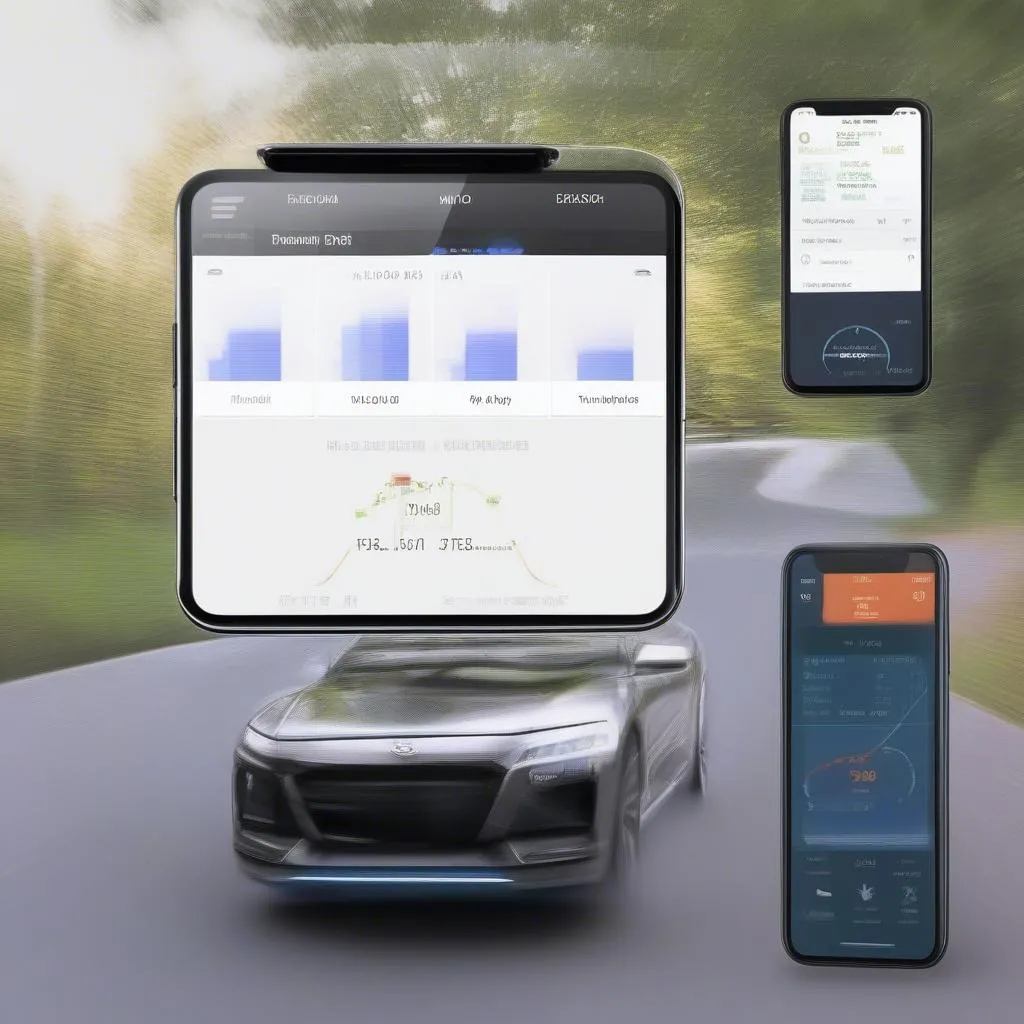Have you ever wondered what’s going on under the hood of your car? Do you want to know how to diagnose problems without having to spend a fortune at the mechanic? The answer is simple: an OBD reader. But how do you use it? Where do you plug it in? Let’s dive into the world of OBD readers and learn how to connect them to your car.
What is an OBD Reader?
An OBD reader, or OBD2 scanner, is a handy device that allows you to connect to your car’s onboard diagnostic system. It acts as a translator between your car and your phone or computer. Through this device, you can access a vast amount of information about your car, including:
- Engine codes: These codes are stored by your car’s computer when a problem occurs. Using an OBD reader, you can read these codes and understand what’s wrong with your car.
- Real-time data: You can see a real-time view of various sensors and parameters, like engine speed, fuel pressure, and coolant temperature.
- Vehicle information: You can learn about the car’s make, model, year, and VIN number.
Why Should I Use an OBD Reader?
Imagine you’re driving down the road and your car starts behaving strangely. Maybe the engine light flashes, or you notice a decrease in performance. Without an OBD reader, you’d be left guessing about the problem and might even have to take your car to a mechanic for a costly diagnosis.
However, with an OBD reader, you can quickly identify the issue by reading the error codes. Think of it like a doctor for your car! You can even use it to track your car’s performance over time, helping you identify potential problems before they become serious.
Where Do I Plug in the OBD Reader?
The OBD port is typically located underneath the driver’s side dashboard near the steering wheel. You’ll find a rectangular port with 16 pins. Some car manufacturers may have the OBD port located in other areas, such as near the fuse box or in the glove compartment.
It’s crucial to consult your car’s owner’s manual to find the exact location of the port.
How to Plug in an OBD Reader: A Step-by-Step Guide
- Locate the OBD port: Consult your car’s owner’s manual to find the exact location of the port.
- Turn off your car: Make sure the ignition is turned off.
- Plug in the OBD reader: Insert the OBD reader into the port. Ensure it’s securely connected.
- Turn on the ignition: Turn the key to the “ON” position (not starting the engine).
- Connect the OBD reader to your phone or computer: Follow the instructions that came with your OBD reader to connect it to your device.
FAQs about Using an OBD Reader
Can I use any OBD reader for my car?
Most modern cars use the OBD2 standard, so any OBD2 reader will work with your car. However, there are some older cars that may use an older OBD standard, like OBD1. If you own an older car, you might need to purchase a specialized OBD reader.
What types of OBD readers are available?
There are several types of OBD readers available, including:
- Wireless OBD readers: These connect to your phone or computer via Bluetooth or Wi-Fi.
- Wired OBD readers: These connect to your phone or computer via a USB cable.
- Diagnostic scanners: These are more advanced OBD readers used by professionals.
Are there any safety concerns with using an OBD reader?
OBD readers are generally safe to use. They simply access data from your car’s computer, and they don’t have the ability to modify your car’s settings.
Can I use an OBD reader to reset the check engine light?
You can use an OBD reader to reset the check engine light. However, remember that resetting the light doesn’t solve the underlying issue. If the problem persists, you’ll need to address it to prevent further damage.
Tips for Choosing an OBD Reader
When selecting an OBD reader, consider:
- Compatibility: Ensure the reader is compatible with your car’s make, model, and year.
- Features: Decide on the features you need, such as real-time data monitoring, code reading, and compatibility with your preferred app.
- Ease of use: Choose a reader that is easy to use and understand.
- Price: OBD readers can vary in price. Choose a device that fits your budget and needs.
 OBD Reader Plugged into Car
OBD Reader Plugged into Car
Conclusion
An OBD reader is a valuable tool for any car owner. By understanding how to plug it in and interpret the data it provides, you can keep your car running smoothly and save money on expensive repairs.
If you’re looking for more information about OBD readers, visit https://techcarusa.com/how-to-plug-in-an-obd-reader/ for a comprehensive guide.
 OBD Reader App on a Smartphone
OBD Reader App on a Smartphone
Don’t hesitate to contact us if you have any questions about OBD readers or need assistance with diagnosing car problems. We have a team of automotive experts available 24/7 via WhatsApp at +84767531508 to help you.
Let us know your experience with using an OBD reader in the comments section below!